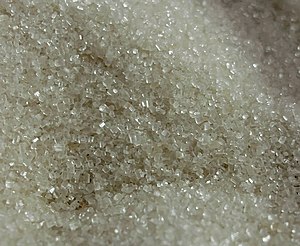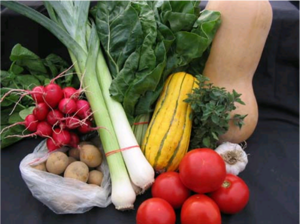This week we will be focusing on the
Paleo Diet, which has become quite popular over the past few years, as people become more aware of their health, and how much what we eat really does affect us. Don't know what the Paleo Diet is? Read on to find out! And for some recipes and videos, be sure to check back later this week.
 Cover via AmazonThe Paleo Diet in the Modern World
Interview by Nikki Young
Cover via AmazonThe Paleo Diet in the Modern World
Interview by Nikki Young
The paleo diet is defined by eating meat, fish, vegetables, fruits, plants, nuts and seeds. But should we be concerned, or at least aware of the modern modifications we often implement to create a meal? Are we eating paleo with too many modifications, or do we hold the ability to create an even more nutritiously dense meal and obtain better health than our ancestors? What if we could find out the exact foods our closest genetic ancestors ate and mimicked that to our diet as close as possible, would we obtain the same good health our ancestors had, or has our environment changed too much that our bodies now require more?
To obtain a better insight I spoke with Greg Battaglia.
The paleo or paleolithic diet is one which bases the concept of the foods available to our hunter gatherer ancestors, which ultimately breaks down to foods provided and found in nature, without the necessity or addition of modern food techniques, chemicals, preservatives or processing. The fundamentals of the paleo diet provide us with the basic guidelines and principles we should apply to our diets and lifestyle today; not necessarily the exact foods available to our ancestors within their environment.
But the question then arises, are we ultimately in a position now where we are fortunate enough to have a large range of food sources we can choose from - and have the ability to achieve even greater health than our ancestors because of this? Or should we possibly be avoiding many of the food sources our ancestors wouldn't have had available and/or in the amount they would have had available, because our genes are still adapted from the more minimal food sources our ancestors consumed and had available?
Greg:
It is known that our ancestors had generally good health and didn't suffer from many of the chronic illnesses that we do today. Ultimately the diet of our ancestors varied somewhat depending on where they lived, their environmental climates as well as other factors.
Ancestors living around Canada would live mostly of fresh salmon, deer, elk, berries and plants. Whereas ancestors living around Africa would have lived on plant roots and animals. And then there are the Aboriginals in Australia who live off the land who eat animals, bugs, plants, native nuts and honey.
 Image via WikipediaNikki:
Image via WikipediaNikki:
But research shows all our ancestors had good health - because they where eating natural food sources available. But if this changed, and Aboriginals suddenly lived in Canada, eating salmon and berries, and ancestors in Africa suddenly lived in the outback of Australia - would they all still have vibrant health?
Greg:
This is a great question that I've pondered myself self many times. I can't say that I have an exact answer. I personally look at paleo as an explanation for why certain dietary strategies work rather than a prescription, per se. For instance, the fact that many people are gluten intolerant can be explained using the paleo model. If gluten didn't cause any problems we wouldn't tell people to not eat grains simply because our ancestors didn't. I guess what I'm saying is that the paleo model can guide our ideas, but ultimately solid science must be there to confirm it.
In terms of diets differing based on geographic locating, there is some evidence that isolated groups develop adaptations to certain foods. For instance, the people on the island of Okinawa have developed a salivary enzyme that is used specifically for breaking down starches contained in rice, whereas people of European descent do not have this specific enzyme. This is obviously due to the fact that Okinawans have been eating a lot of rice for a long time and somehow were able to develop some adaptations to it.
I think it's also important to consider that probably not all of our ancestors in the Paleolithic were necessarily healthy. Some probably had to survive long periods on limited food sources and indeed developed deficiencies. Others probably survived in a lush environment with a wide variety of nutrient dense foods and flourished with excellent health.
I think at the end of the day the goal is two-fold:
1. Get all essential nutrients needed
2. Avoid things that cause problems (possibly grains, dairy, legumes)
Whether all of our ancestors were able to do this or not is irrelevant to our modern needs. The fact that the Australian Aboriginals, the Inuit, and the Kalahari Bushmen were able to survive for so long suggests that all of their diets met the 2 previous requirements. If they didn't, they would have died off pretty fast, as I'm sure happened to plenty of cultures that failed to thrive.
 Image via Wikipedia
Image via WikipediaI think the main reason that paleo works so well is because it simply removes the stuff that we know to cause problems. Whether you eat lots of fish, broccoli, spinach, and collard greens or lots of beef, cauliflower, carrots, and sweet potatoes (not saying that you can eat just those foods and meet all nutritional requirements) and end up meeting all your macro and micronutrient and calorie needs you'll be healthy since you met your needs and avoided the stuff that's going to cause damage in the first place.
Nikki:
Although our ancestors wouldn't have combined many of the foods we have, we are now able to eat more than one nutritious food source at any one time. Additionally, combining certain foods can help the synergy of nutrients and help with digestibility. With that in mind, should we be concerned with high calorie meals, high carb meals or liquid meals even if 100% of the ingredients are paleo friendly? And does this ultimately begin to go outside the basic principles of the paleo diet?
Greg:
When it comes to food combining, I keep a very simple rule: never eat a meal that is both high in fat and carbs. All meals should be either high in fat and protein OR high in protein and carbs, but never high in both fat and carbs. The reason for this is that the insulin spike that follows carb consumption signals for fat molecules to be stored at the nearest adipose sites. If blood insulin levels and blood fat levels are simultaneously elevated body composition will suffer along with performance, as the body will be running on glucose rather than the more consistent burning fat.
Don't get me wrong, calories still count when it comes to fat loss and body composition, but so do macronutrients ratios and combinations. However, it's also important to understand when to consume a protein/carb meal. The best time is post-workout if you have a performance goal. If I don't workout on a particular day I keep all of my meals high in protein and fat and low in carbs, since my muscle didn't need any glycogen to be replace, hence the absence of a post workout meal containing starchy carbs.
Here would be my recommendation:
- For general health/longevity: 90% of the time eat high protein/high fat meals, even post-workout. Eat meals higher in paleo carbs occasionally to re-calibrate insulin sensitivity.
- For performance goals: Eat a high-carb (starchy paleo carbs such as sweet potatoes, squash, yams, etc.)/high protein meal post workout after metabolic conditioning workouts, but not after strength work. The rest of your meals should be high protein/high fat/low carb.
However, since the paleo lifestyle is one based on health, longevity, and quality of life I think it's key to stay with the basics:
Eat whole paleo foods, keep carb and fat meals separate, moderate calorie intake and don't gorge, load up on veggies and pastured meats, incorporate some intelligent intermittent fasting, develop some stress reducing techniques, exercise just enough to get the benefits, but not enough to get injured or cause long-term wear and tear. When you have goals that go beyond that, such as performance or body composition goals, you have to stretch the paleo concept and make some compromises with your lifestyle and sometimes with your health and longevity.
NOTE: Interview has been edited for length. If you would like a copy of the full interview, please post a comment below and we will arrange to get you a copy.
Be sure to check back for some yummy Paleo recipes and more interesting info on this unique way of eating, later this week!

 Image via WikipediaAmericans is by gathering together with friends and family and having picnics, barbecues, and bonfires to commemorate those who now serve, those who have served in the past, and countless others that we will never know.
Image via WikipediaAmericans is by gathering together with friends and family and having picnics, barbecues, and bonfires to commemorate those who now serve, those who have served in the past, and countless others that we will never know. Image via Wikipediacan be used on your beef, pork, and chicken that pack a powerful punch when it comes to taste and leave off those pesky calories that sugar filled barbecue sauces add to your favorite dishes.
Image via Wikipediacan be used on your beef, pork, and chicken that pack a powerful punch when it comes to taste and leave off those pesky calories that sugar filled barbecue sauces add to your favorite dishes. Image via WikipediaI have seen lately in grocery stores is red & blue berry bowls - strawberries, raspberries, and blueberries are seasonal treats that go right along with the holiday colors!
Image via WikipediaI have seen lately in grocery stores is red & blue berry bowls - strawberries, raspberries, and blueberries are seasonal treats that go right along with the holiday colors!



























